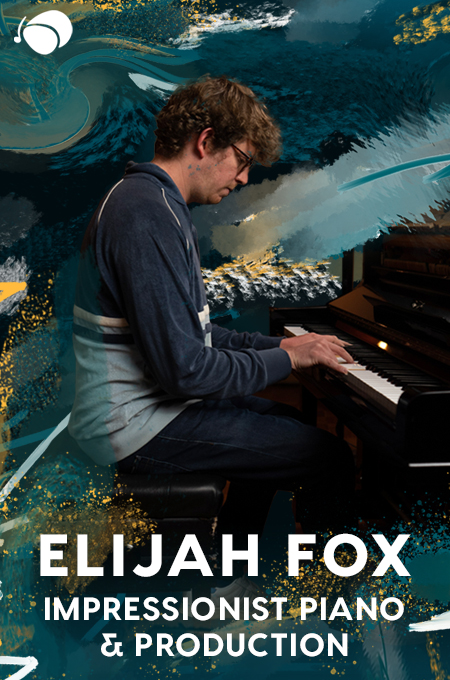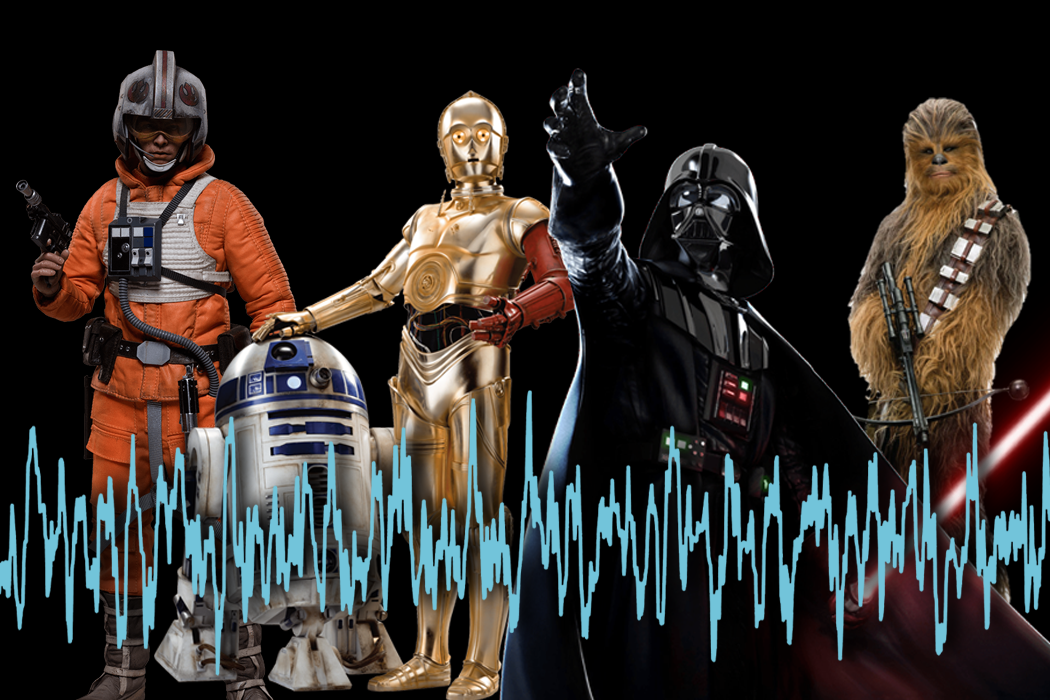
+ Learning about synths and sound design? Preview Soundfly’s definitive new course, Advanced Synths and Patch Design for Producers for free and subscribe for access.
In case you don’t know by now, I’m happy to fill you in: There is a new Star Wars movie coming out next week. If you know anything about the Star Wars franchise, you’ll know that one of the most iconic aspects of the films is the innovative and consistently distinct palette of sounds utilized over the years. From the stereo hum of the lightsaber and Darth Vader’s awkward breathing to the unmistakable whoosh of TIE Fighters and R2D2’s synthesized blips and bloops, many argue that these distinct sounds are the subtle key to Star Wars’ continued success through the generations.
To celebrate the release of the latest film, we’re taking a look at some of these sounds to unmask a bit of the magic behind the characters and demystify a variety of sound design techniques that might help you crack a creative rut or put the finishing foley touches on a production.
And if you’re seeking to learn more about synthesizing unique sounds and designing patches to suit any visual media need, you’re going to want to dive deep into Soundfly’s Advanced Synths and Patch Design for Producers course, to better understand that synth in your studio and help you create a wide array of scintillating sonic worlds.
But for now, and without further delay, let’s blast off!
R2D2
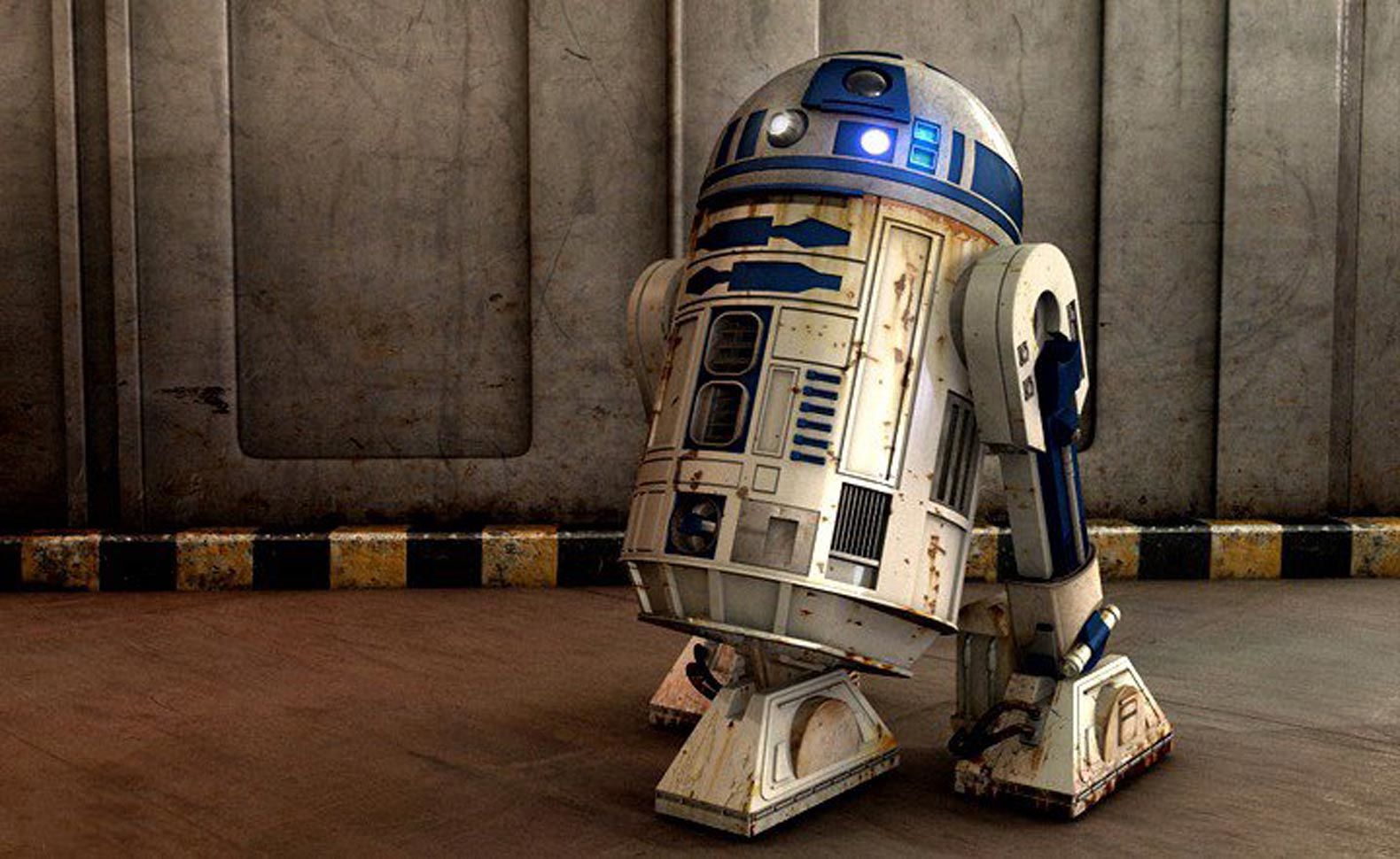
R2D2’s sounds are, for many, the first mental association we make when someone says “Star Wars sounds.” Making use of the classic Arp 2600 synthesizer, this type of sound is also arguably the most famous utilization of the now-infamous sample-and-hold circuit. In brief, this analog device takes a periodic sample of the frequency of a random noise source and utilizes that to control, well, anything you assign it to!
In the classic R2D2-style patch, two oscillators, and some pink-ish noise are routed to the ring-modulated circuit of the Arp 2600, and the sample-and-hold circuit is used to control both oscillator pitch and the filter cutoff frequency to give the sound some contour and a more natural timbre. Playing the Arp’s keyboard along with the sample-and-hold circuit gives the sound some life as well.
For those of us not fortunate enough to have an Arp 2600, a fun way to emulate these sounds manually is to use any VST that has a self-resonating filter, route some white or pink noise into the filter, and simply use a combination of a MIDI-routed knob and a keyboard to control the cutoff of the filter together, creating natural-sounding swells and bleeps. Combine this with any type of sample-and-hold circuit on the synth, and you’ll start to get close.
The ultimate secret of R2D2’s emotive character is that sound designer Ben Burtt actually combined his own voice with the sound of the synthesizer to create baby-like wails and cries in addition to the computer-like sounds of the Arp. It’s this unique combination that gives R2D2 its own organic life. Now, figuring out just what it is this little droid is saying is a whole other thing…
Lightsaber Hum
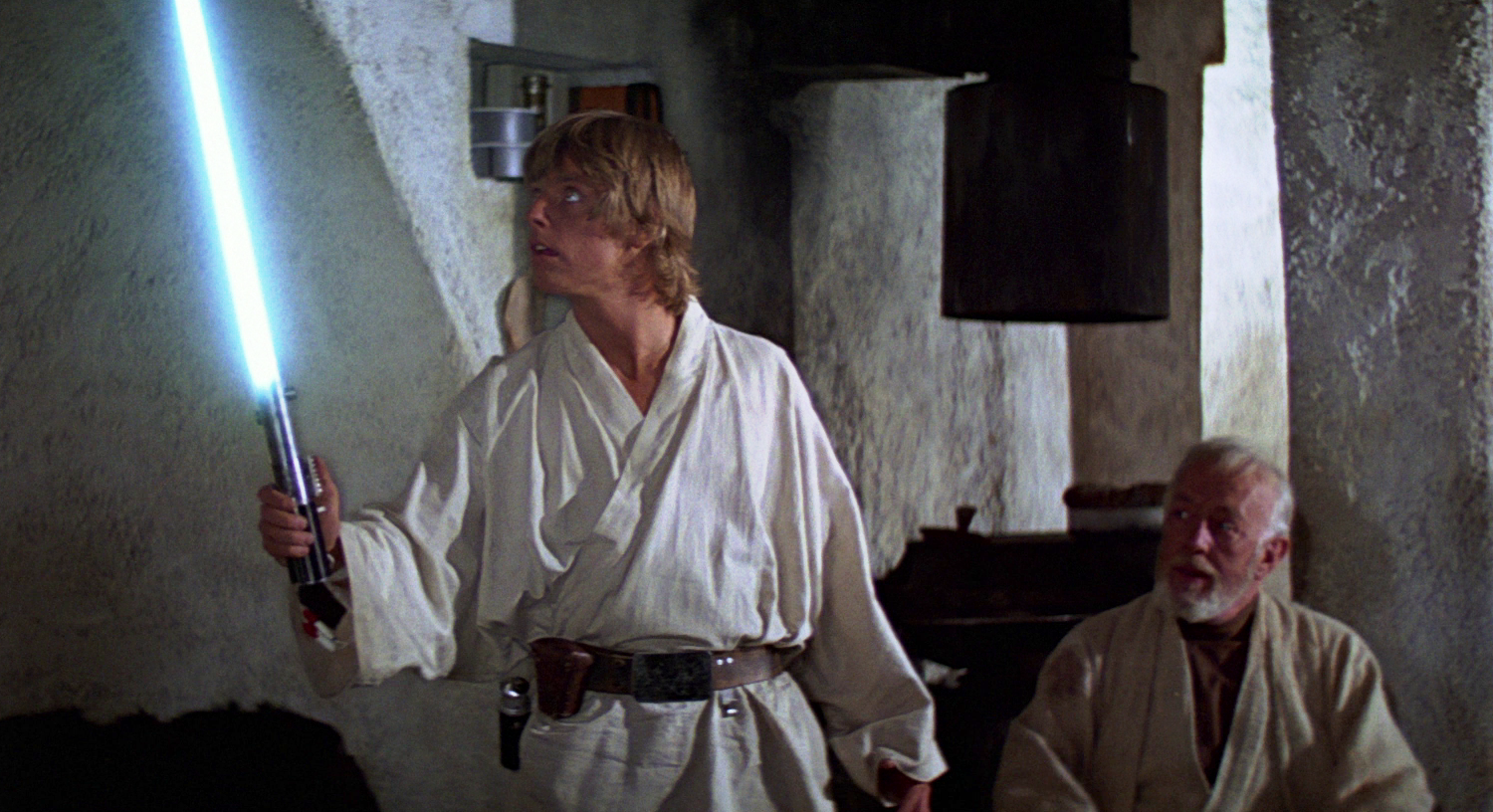
This is one of the most interesting foley sounds to many for the simple reason that it’s clearly synthesized but deeply responsive to the characters’ movements on-screen. The story behind the creation of the sound is almost as fascinating as the sound itself!
When Ben Burtt read the original script for Star Wars, the lightsaber sound actually jumped out first as the most inspiring part of the entire Star Wars universe! While working as a projectionist, he noticed that the projection equipment gave off a warm hum, and recorded that sound as the base hum layer. After, he combined this with a recording of the buzzy sound of the tube on an old television.
After combining the two, Burtt played the resulting hum through a large speaker and actually moved a microphone around in space to get the rise and fall of the pitch as the blade was swung. Because of the doppler effect, rapidly changing the position of the mic in space meant that the pitch would rise and fall as the mic catches the sound moving through air at different speeds.
To try this on your own without giant projectors or other pieces of equipment, try using a field recorder (Zoom makes good, cheap mics for this purpose) to pick up some hum out of a guitar amp, your finger pressed against the end of a cable that’s plugged into a set of speakers, or anything else that gives you a big buzzy ground hum. Then, use the same field recorder to mimic Burtt’s doppler effect recording, and you should be just about there!
Chewbacca

Chewie, like R2D2, has a distinct, non-human palette of sounds that manage to capture a wide array of moods, tones, and feelings. While many think that this was actually a human making those noises, this is one of those instances where the truth is actually far simpler than a human trying to make the noises.
When Ben Burtt and George Lucas met to discuss Chewie’s character, Lucas actually suggested looking to sounds from animals such as bears, who make most of their sound with the simple action of opening and closing their mouth. Burtt took the advice to heart, recording hundreds of bears that were sick, angry, distressed, playing, and so forth. Painstakingly, he characterized them into emotional genre, and, in the end, simply synchronized them to the film! Sometimes, the right sound really is that simple to find in the world around you.
Darth Vader
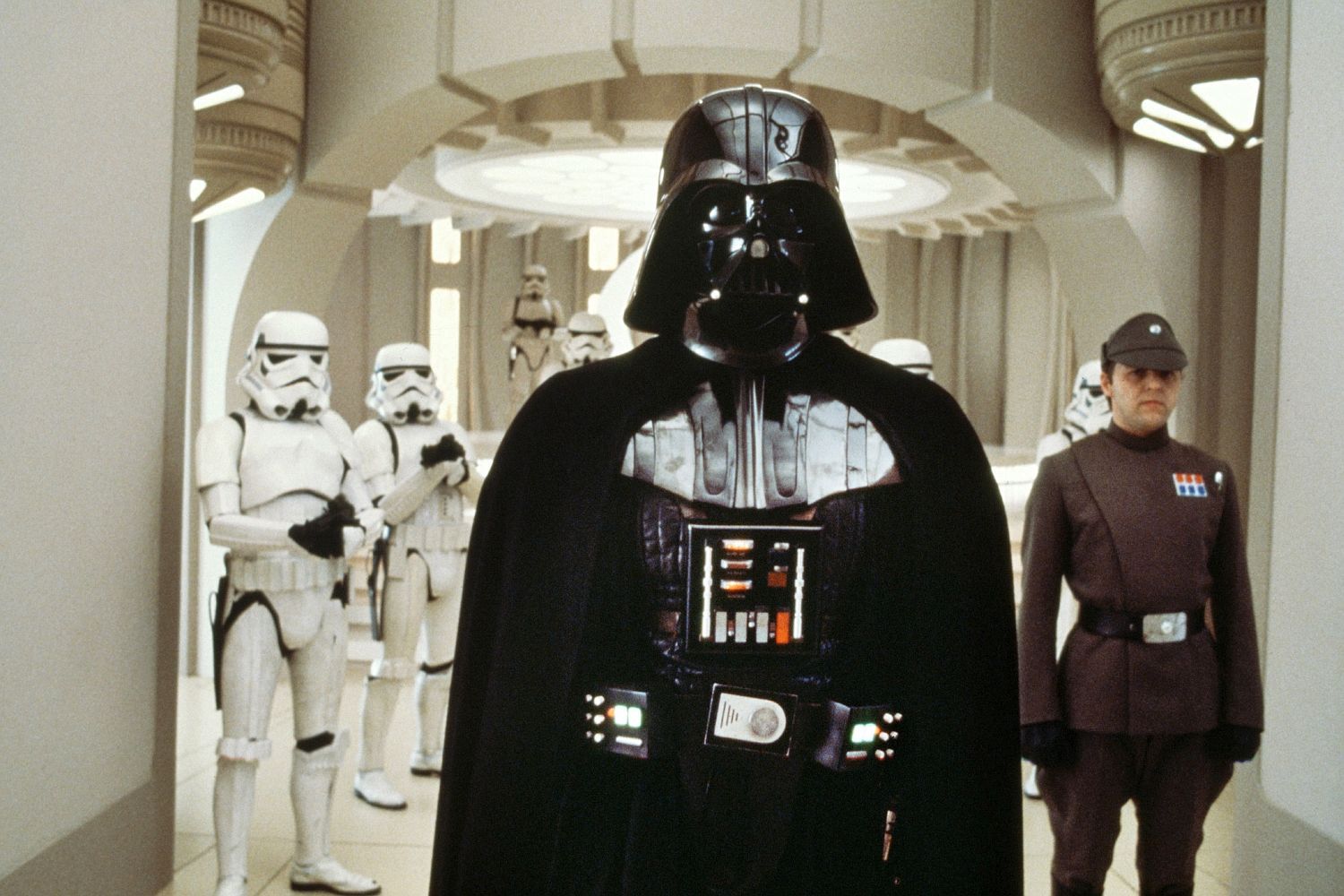
“That moment” when Darth Vader first walks into the screen and takes his first, unmistakable breath is a scene many will never forget. Of course, his breathing is an integral part of what’s so incredible about the moment. Much like Chewbacca’s noises, the answer is far simpler than you might imagine. Ben Burtt actually used an old scuba-diving regulator to create the deep, breath-like, yet otherworldly tone that we now associate with Darth Vader. Simply recording this and syncing it with the film was all it took!
What many don’t know, however, was that in the first experimental mixes of Star Wars, Vader’s character was treated as much more robotic, and, in fact, every single motion he made had a mechanical noise associated with it. Obviously, this took up far too much sonic space, making way for the one, simple, breathing sound that we now know to be so iconic.
Laser Pistol

We come now to our final iconic sound from the franchise: the sound of the laser pistols. We’ve talked a bit about making laser sounds on synths before, but like many of the sounds described so far, this one’s a bit different.
If you’ve ever played with a Slinky before, you know that you can create a spring-y ‘pew’ sound by holding the Slinky high in the air, and dropping the bottom onto the floor. Burtt and the Star Wars crew took this principle to the next level, taking recording gear out to a radio receiving tower, and striking various parts of the support cables that are under very high pressure, thus creating a metallic blaster sound.
To recreate this sound at home, I recommend taking a cheap mic, something like a Shure SM58, sticking it into a Slinky that is dangling from some height, and simply dropping the bottom of the Slinky onto the floor. This technique gets you to a very similar place very quickly!
As you can see, sound design is an art unto itself. Finding, creating, and syncing sound to film is a long process involving a lot of creative experimentation, followed by the extremely precise and tedious process of getting the sound to sit just right with the film. Studying these techniques, however, provides a window into the oft-misunderstood world of foley, and at the same time, gives those of us who don’t make music for film the opportunity to explore and expand our own sound palettes in ways previously unimaginable.
Continue learning with hundreds more lessons on mixing, DIY home audio production, electronic music recording, beat making, and so much more, with Soundfly’s in-depth online courses, like The Art of Hip-Hop Production, Modern Mix Techniques, and of course Advanced Synths & Patch Design. Subscribe for unlimited access here.

